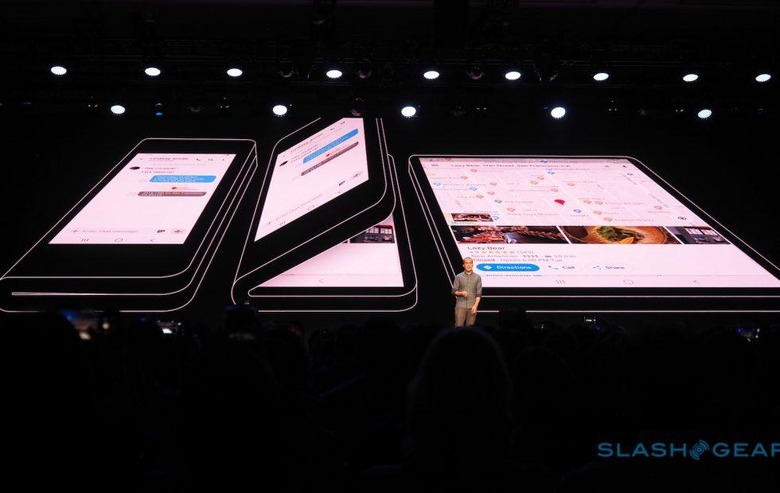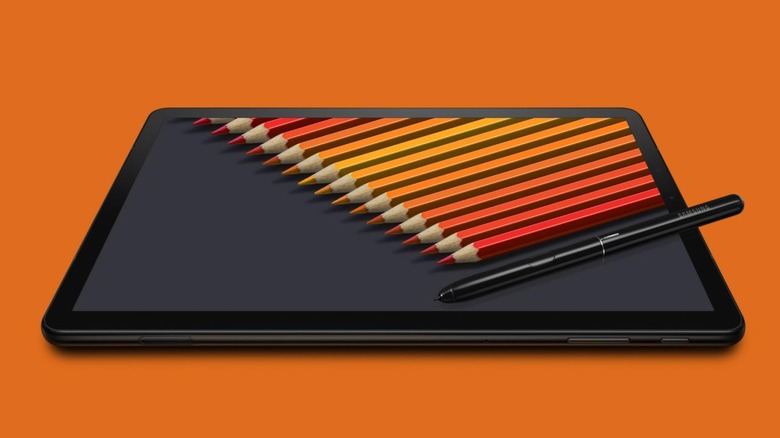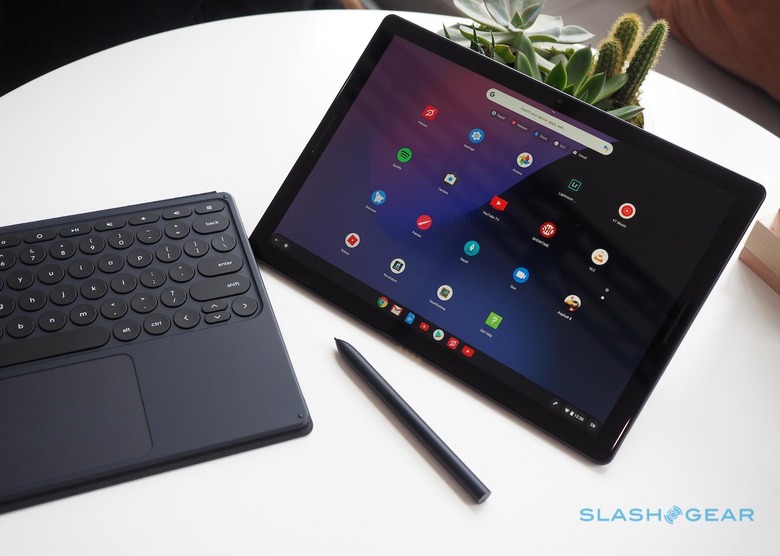Android Tablets Are Losing Steam, Chrome OS To The Rescue
Samsung recently announced the Galaxy Tab S5e without much fanfare and it was received with equal amounts of interest. Granted, the tablet sounded more like an "economy" (Samsung will probably call it "essentials") edition of a proper Galaxy Tab S5, but the silent treatment closely echoes the reception of Android tablets of late, even from brands like Lenovo and Huawei.Android tablets are, for all intents and purposes, dead and there is little to no hope of a revival. Chromebooks, or Chrome OS tablets, do seem to be the way forward but Google and its partners need to be careful lest they repeat the same mistakes all over again.
Size does still matter
Some would point to the birth of phablets as the start of the end for tablets. There might be some truth to that, at least for the smallest tablets in the market. Make no mistake, however, tablets still fill a need that no phone can provide. At least not until we get those foldable phone/tablet hybrids. Even with the largest phone screens, and especially with large screens in small bodies (goodbye bezels), there is still a significant difference in viewing the same content on a phone and on a tablet.
Many people will be content with scrolling through social media on tall phone screens. They'll be able to read Internet articles and even respond to emails on those. And, of course, watching videos anywhere is very convenient. But there's only so much you can cram in a small screen before your eyes start to strain or your patience starts to wear thin.
There are plenty of websites that still don't cater to small screens, by accident or by design. Many smartphone users would love to have larger screens but would hate to carry a second device, hence the interest in foldable devices. And those that would carry a second device for more than just content consumption would probably just carry a laptop anyway.

Apps matter more
There's no way to sugarcoat this: apps are what killed Android tablets. The Android platform has a ton of great apps (iOS users might disagree). Few work well on tablets and even fewer were designed specifically for tablets or had tablets in mind. Google has long given developers the tools to at least make sure their apps won't look like crap on tablets. Few have done that work. For its part, Google also didn't emphasize it enough. It's as if the entire Android developer community gave tablets a collective snub.
Contrast that with iOS apps on the iPad. Yes, it took some time before developers, big and small, got onboard, but they eventually did. With a little push from Apple, of course. There are iPad apps you won't and probably will never see on Android, and there are even apps that you won't see on iPhones.
Only a few manufacturers dared to think out of the box and customize the experience for Android tablets but even then they would run into the limits of Android apps themselves. Overall, Android tablets didn't offer enough of a satisfying or memorable experience so fewer and fewer consumers even bothered. And with no one buying these tablets, manufacturers have fewer reasons to make them.
Creation more than consumption
The iPad was also in danger of being made redundant by the iPhone Plus models until Apple stumbled upon a solution. A solution that, ironically, its founder derided to no end. It was when Apple swallowed its pride and launched the Apple Pencil that the iPad got its renaissance via the iPad Pro and, later, the Pencil-compatible iPad. Suddenly, the iPads were more than just overgrown iPhones and became the darling of creatives and even some mobile workers.

The stylus isn't just a precise pointing tool. It changes the way a device is viewed. Any tablet, or even any phone, can be used with a Bluetooth keyboard but only those devices with styluses, like the iPad Pro or Galaxy Note, are viewed as "pro" devices, devices fit for both creation and consumption. As the iPad Pros and the Surfaces proved, there is a market for those devices. Sadly, even with all the API and hardware available to use, Android tablet makers didn't seem interested in going that direction, preferring to market their slates as just entertainment devices.
Partners matter too
To some extent, it's hard to blame those manufacturers. They were trapped in a vicious cycle of going where the money flowed. But more than that, there was also a lack of drive towards capitalizing what tablets were great for. Instead, they fell back to showing the worst part of Android tablets, being oversized Android phones.
It's not just hardware makers either. App developers had very little incentive to invest in creating or modifying apps for tablets. Google didn't seem interested either. Now it is partnering with big software developers for Chrome OS apps, something it should have done for Android tablets as well. Imagine if it had invested in a relationship with even just Adobe. Its presence would have been enough to challenge rivals to follow suit. Instead, Apple gave Adobe and other creative apps a better home, better support, and better publicity and that's where they're all at now.
Chrome OS rises but there's a catch
It's all moot by now though. There are almost no more Android tablet makers outside of China, except for Samsung and Amazon. Amazon's Fire tablets are no different from your run of the mill entertainment-focused tablets and once Samsung's foldable phone gets underway, you can get it will retire its Galaxy Tab line as well. It's not all doom and gloom, though, for those who can't find a home in either Apple's or Microsoft's domains. Google is grooming Chrome OS for tablet use as well. But if it isn't careful, it will suffer the same fate as Android tablets anyway.
Running Android apps on Chrome OS doesn't let app developer off the hook. In fact, they now have to be more mindful of the context the app is running in. Numerous reviews have noted how Android apps don't behave particularly well on Chrome OS because of windowing considerations.

Google now also has a chance to strengthen its ties with both hardware makers and software developers, especially the big names for the latter. OEMs, including Google itself, have already come out with Chromebooks that have styluses. The app experience for those, however, is no better than Android tablets, sometimes even worse.
If Google is truly serious about marketing Chrome OS as a platform for serious work, then it will have to get serious in getting all players onboard with the plan. Otherwise, consumers will see these Chromebooks as just expensive version of Google-centric, cloud-limited devices and just buy the cheaper models or, worse, get a Windows laptop instead.
